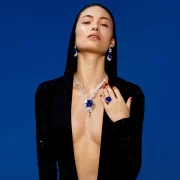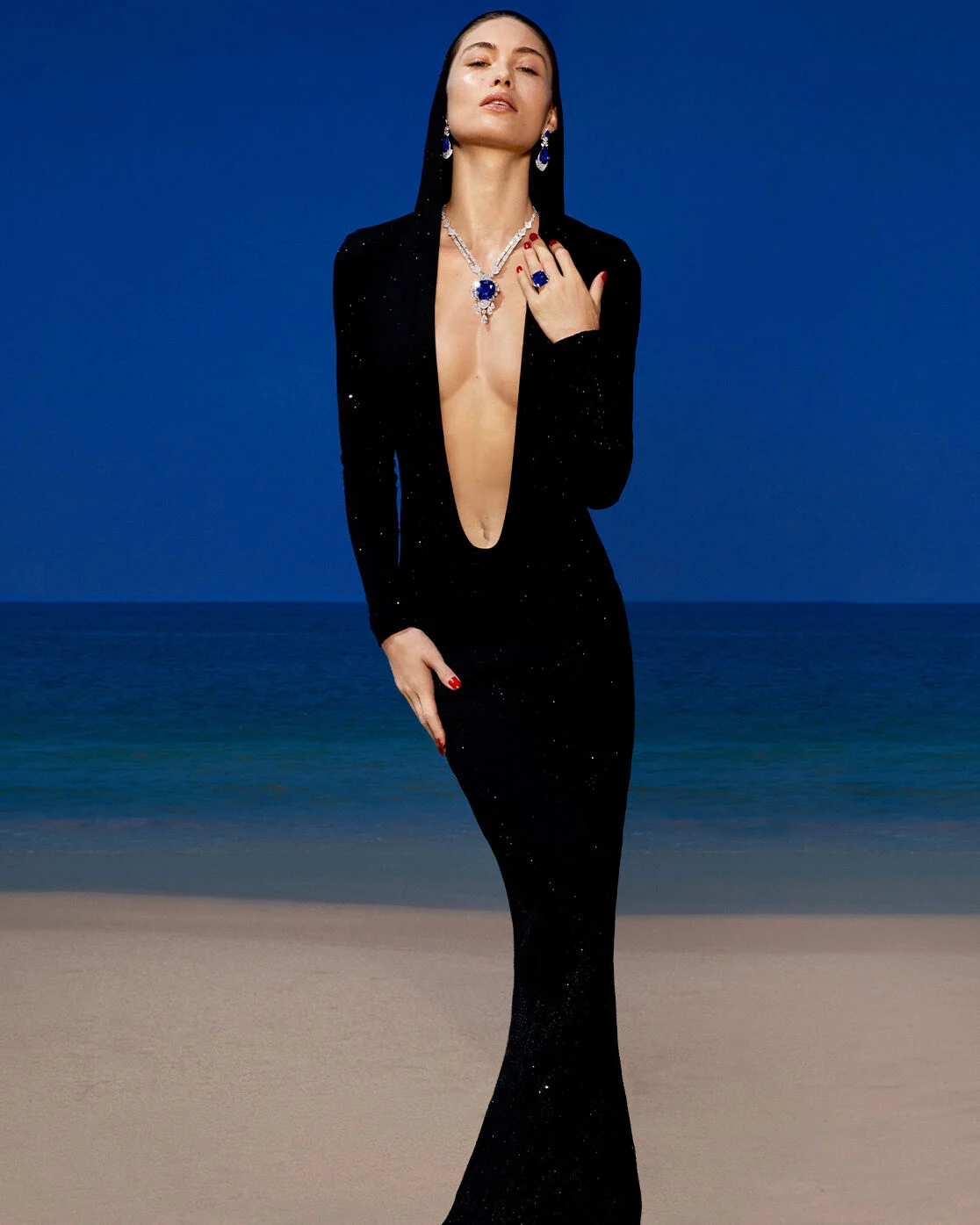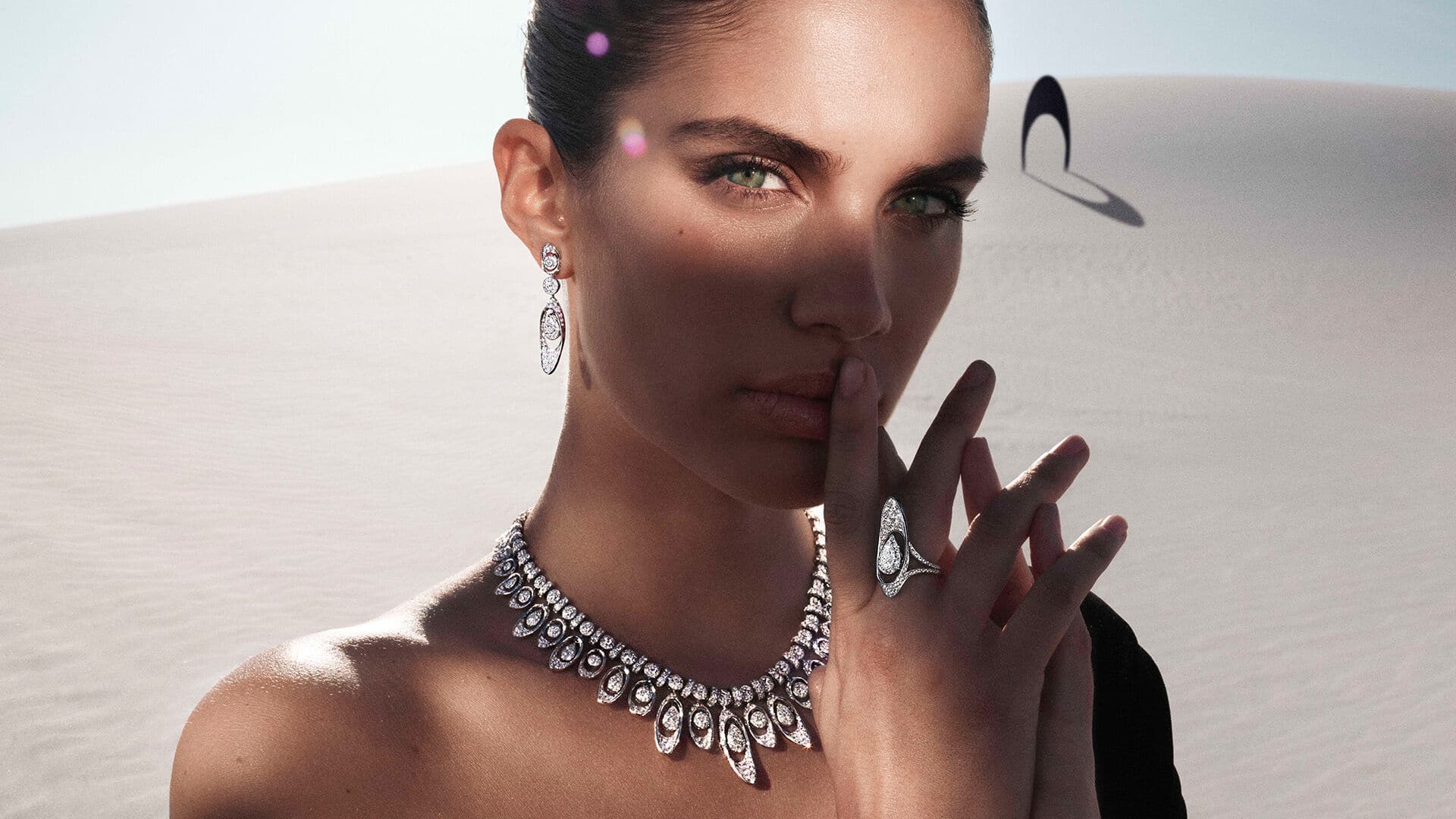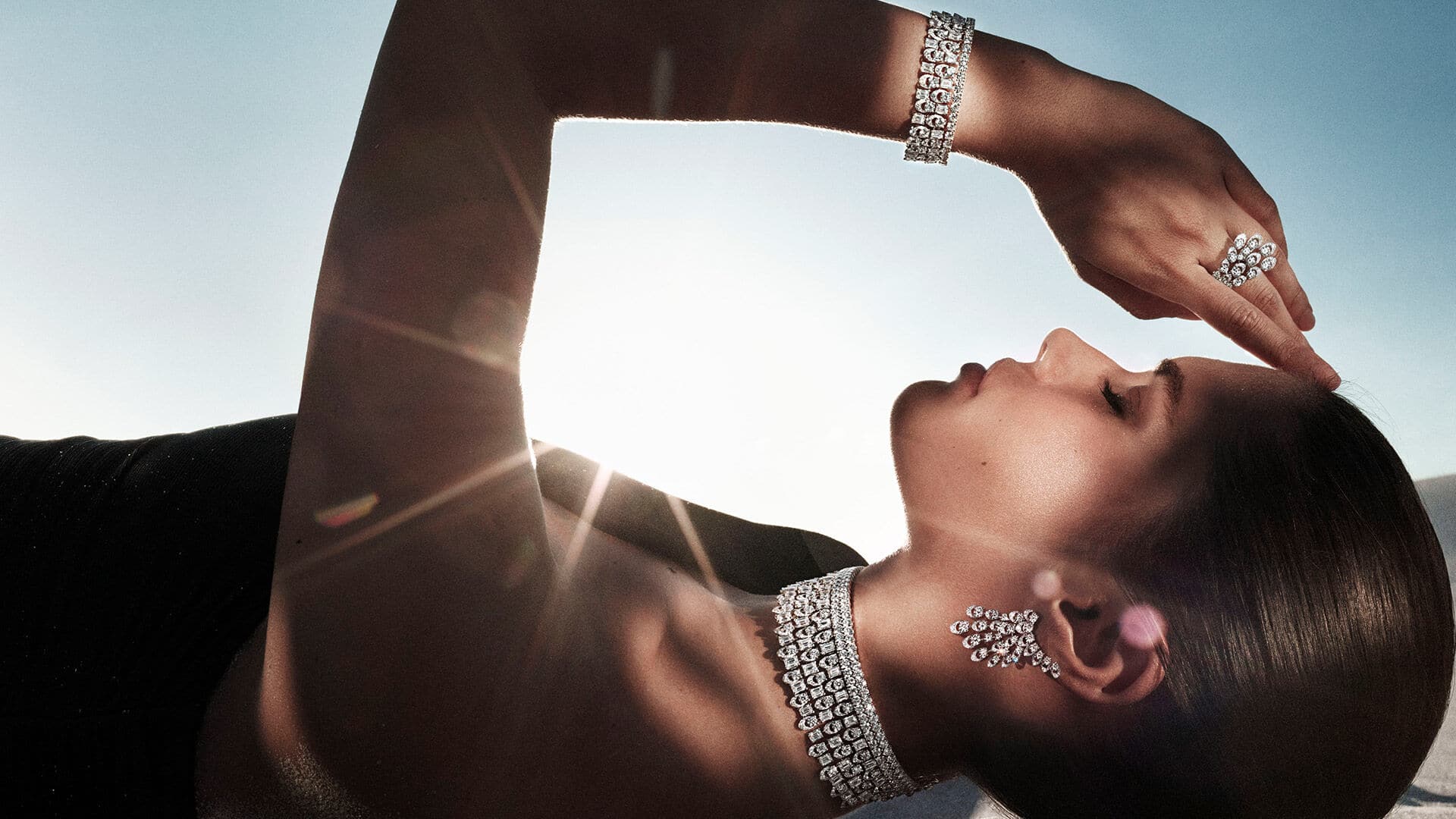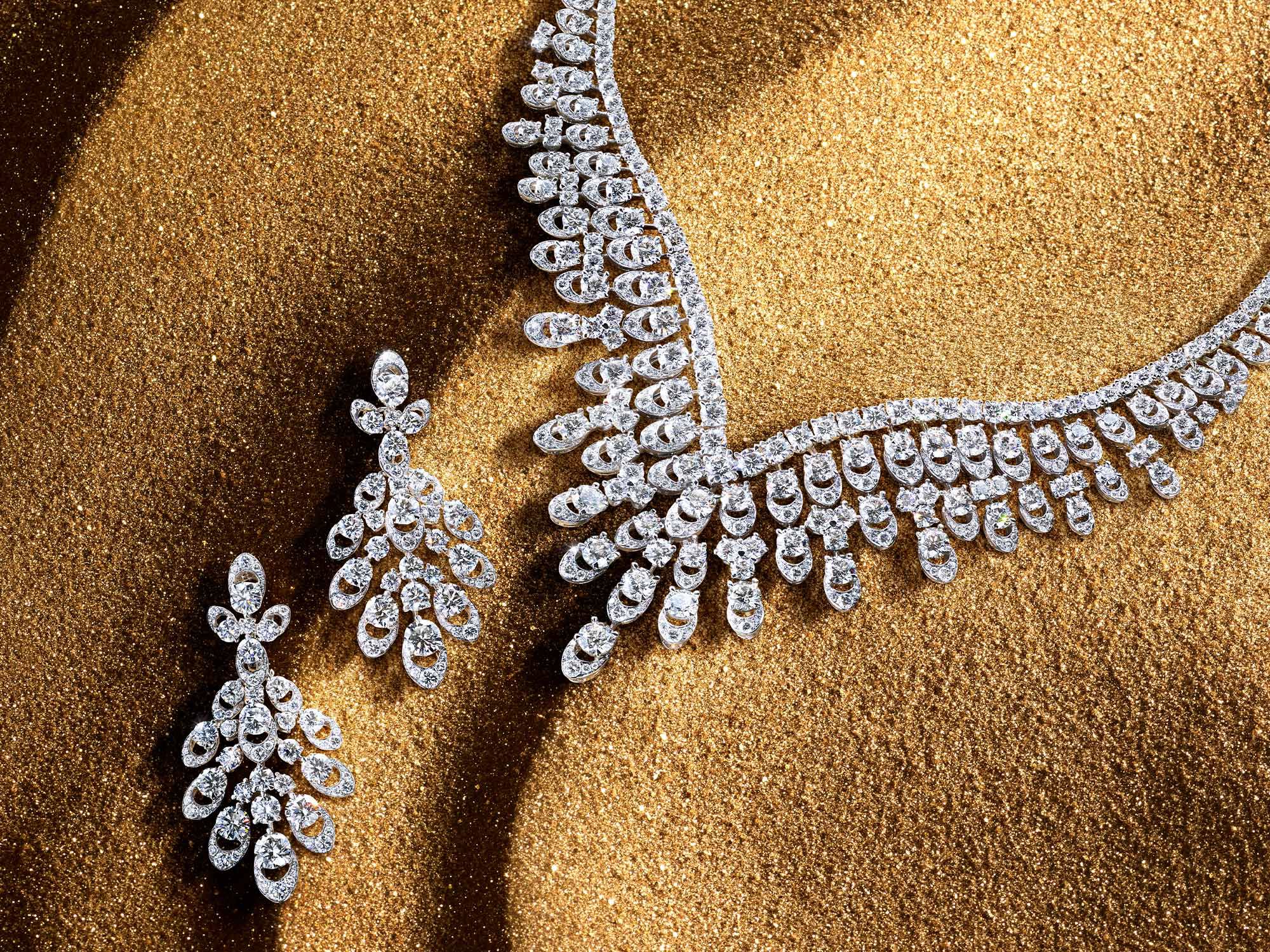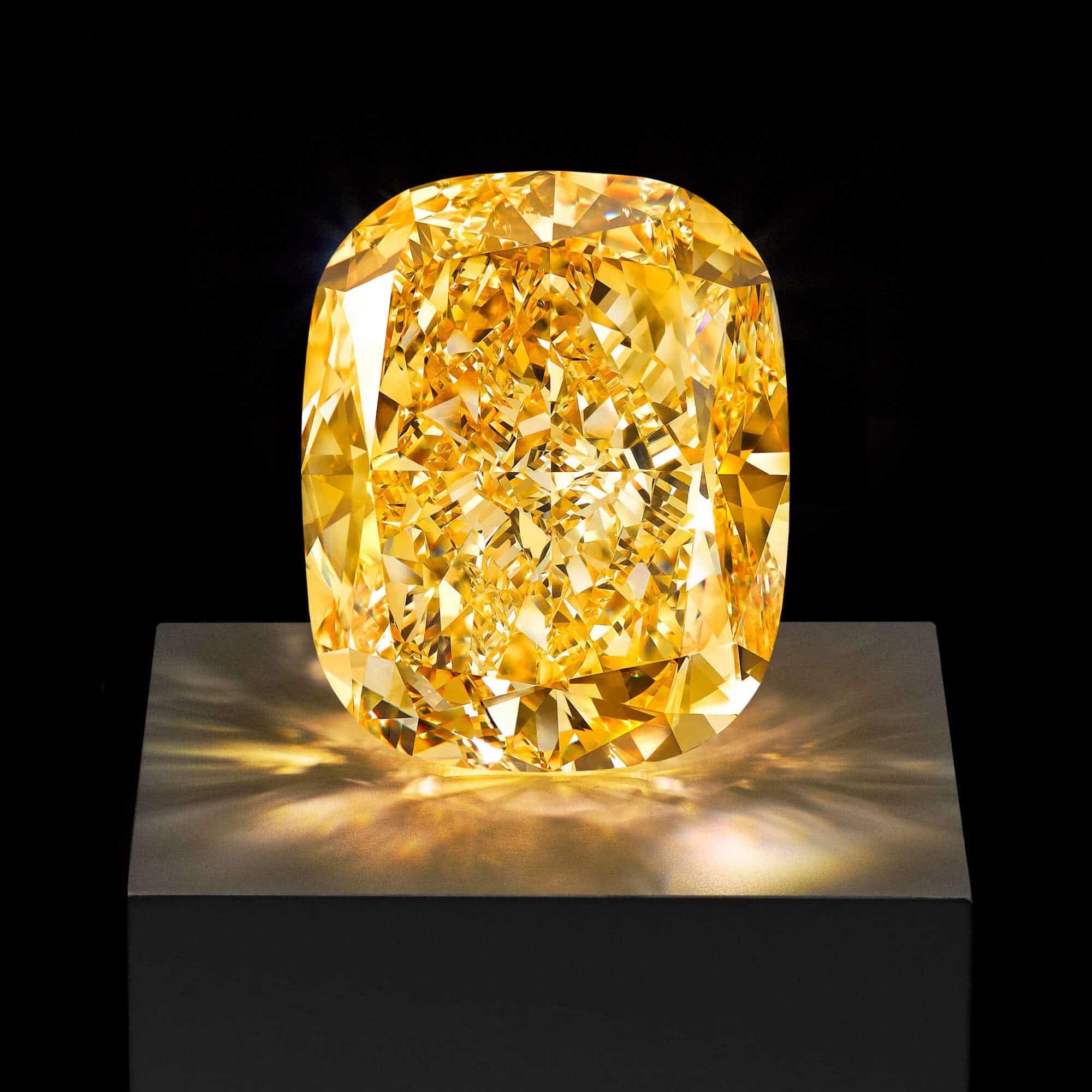GRAFF | Legend of the Mermaids GRAFFABULOUS: CHAPTER 2
The Goddess of Divinity
GRAPHABULOUS: CHAPTER II
Reflected in the turquoise waters, the Goddess of Divinity’s beauty is intoxicating, her eyes a mirror into the soul of these extraordinary gems.
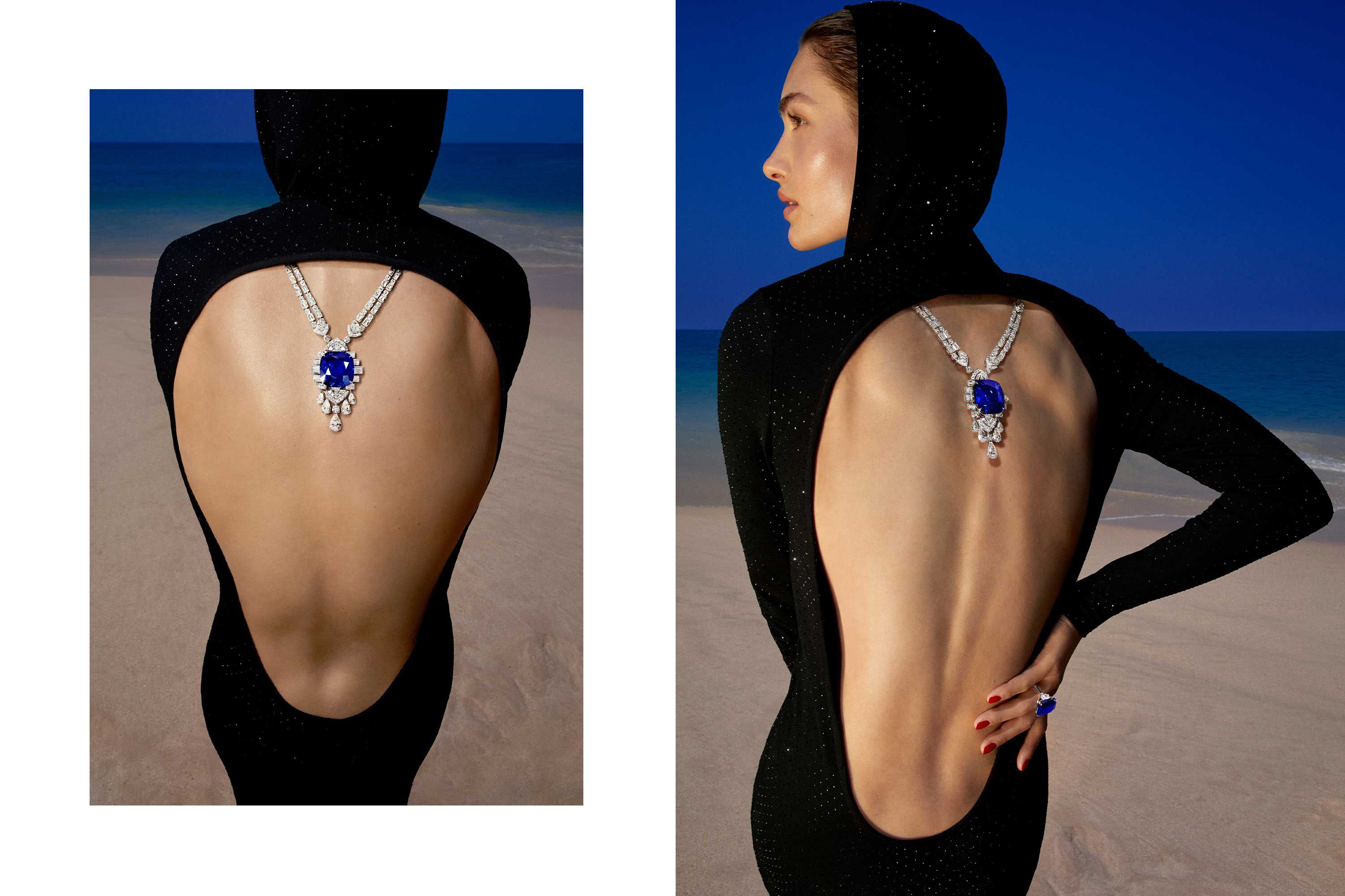
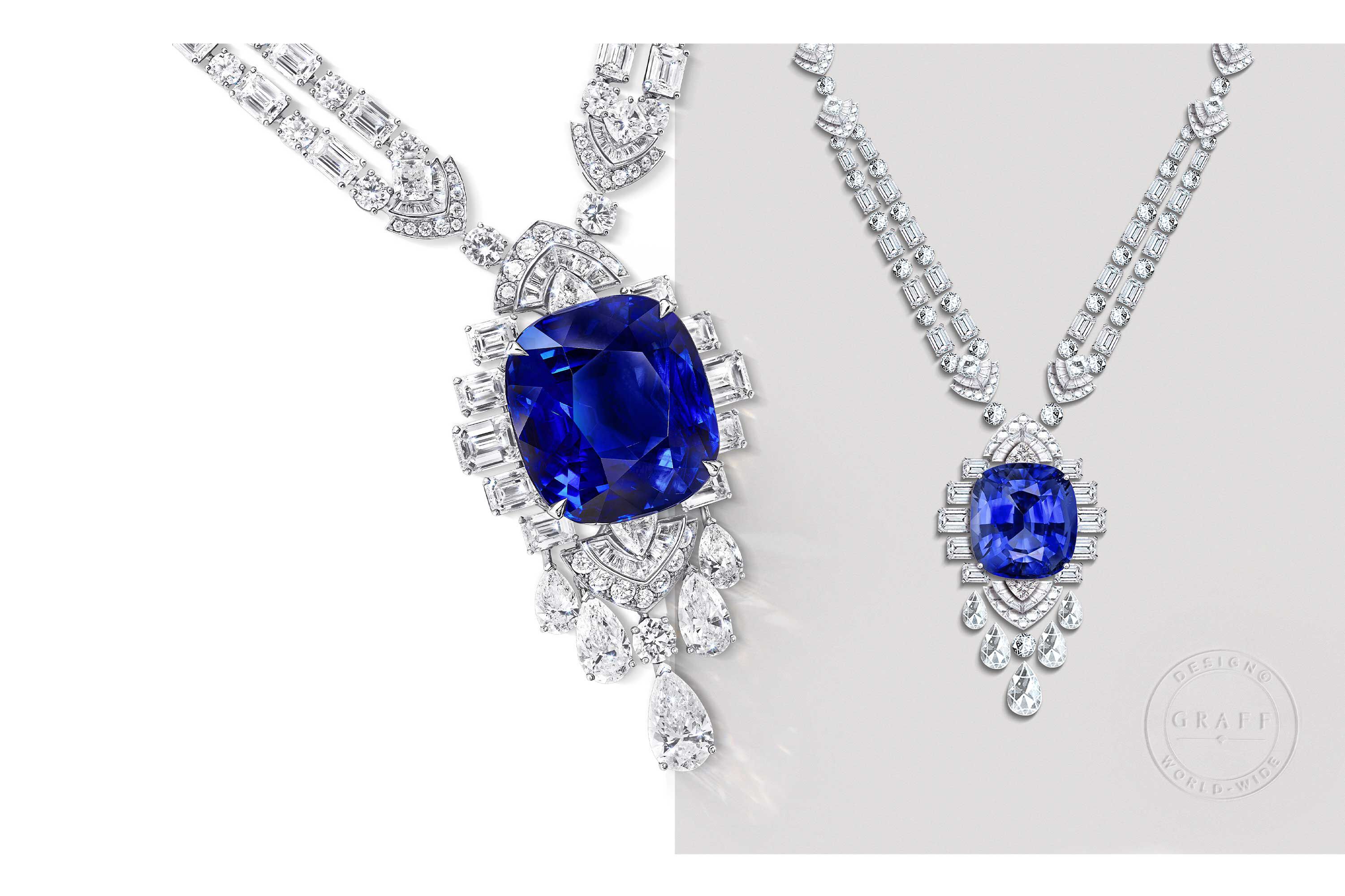
Hidden Depths
The sapphire’s depth had to be counterbalanced, which inspired the elegant diamond surround. “We experimented with different diamond shapes and the emerald cut worked perfectly,” says Design Director Anne-Eva Geffroy. “It creates a step down to the diamond necklace while serving to celebrate this wonderful sapphire.”
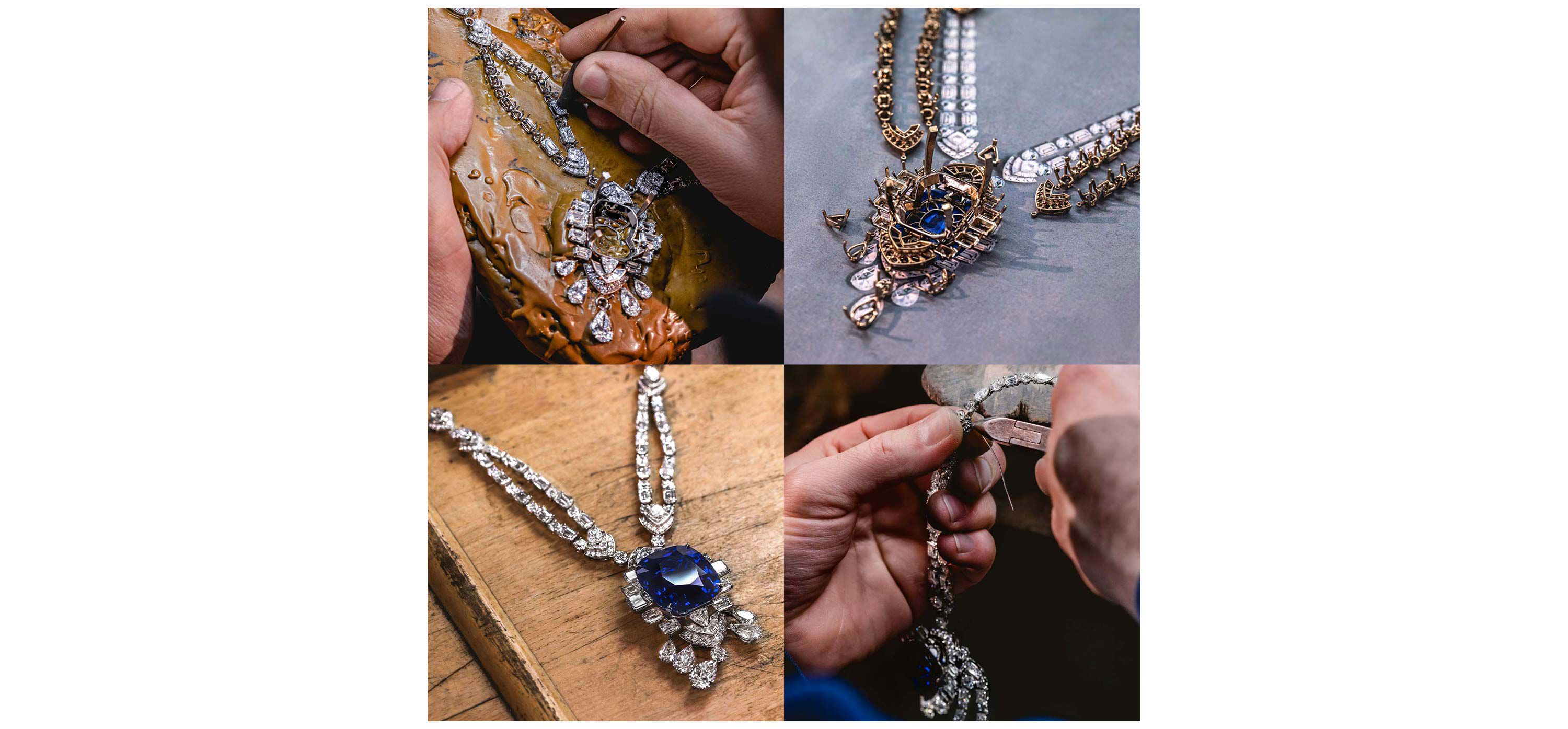
A Complex Art
The richly detailed architecture concealed beneath the necklace was created in CAD by master craftsman Sam Sherry. With a gem of this size, it is important to remove any superfluous metal from the design to ensure optimum comfort when worn. luxury



